Gravel bikes have exploded in popularity in recent years. It’s easy to see why, with gravel bikes offering versatility in abundance and the opportunity for riders to get off the beaten track.
A gravel bike has a lot to offer the everyday rider looking to mix up their riding on a machine capable of handling the rough stuff, without handicapping itself much on the tarmac.
So what exactly is a gravel bike? In this guide, we’ll cover the key features of a gravel bike.
Otherwise, to read about the latest and greatest gravel bikes reviewed by BikeRadar, check out our guide to the best gravel bikes on the market today.
What is a gravel bike?

A gravel bike is designed to enable you to ride over many different surfaces and will typically, although not always, be equipped with a drop handlebar.
The drop handlebar and sporty geometry mean you can make good progress on the road – but with wider tyres, lower gearing and stable handling, you can also head off-road with confidence.
Riding a bike designed for multi-terrain excursions means you can link together gravel routes in new ways, taking in sections of gravel roads, forest tracks, trails, byways and bridlepaths. Or you can load up your gravel bike with camping kit for a multi-day bikepacking adventure.

Like any bike category, a gravel bike from one manufacturer can look very different from another, or even from one model to the next. Some more race-oriented gravel bikes are pitched more towards road speed and light off-road riding, with others bearing more resemblance to mountain bikes.
Choosing the right gravel bike for you depends on the type of riding you have planned. So let’s take a closer look at the design features that define the typical gravel bike.
Gravel bike frame material

Like most other bikes, gravel bikes are made from a variety of frame materials. The most common options are aluminium and carbon, although there are plenty of steel and titanium options on the market too.
Aluminium is affordable, durable and relatively lightweight, making it a good material for a budget gravel bike under £1,000 or a gravel bike under £2,000.
A carbon frame is typically lighter than an aluminium chassis. Carbon can also be engineered to fine-tune stiffness and comfort, and can offer more opportunities for aerodynamic tube shapes (yes, you can get aero gravel bikes).
Gravel bike geometry

Although it looks similar to a conventional road bike, gravel bike geometry is designed for more stable handling off-road. That normally means a longer wheelbase and a slacker head tube angle.
A gravel bike will typically give you a more upright riding position than road bike geometry, with a longer head tube and shorter reach.
That should result in more comfort on longer rides and enable you to shift your weight around to tackle obstacles and off-road descents.
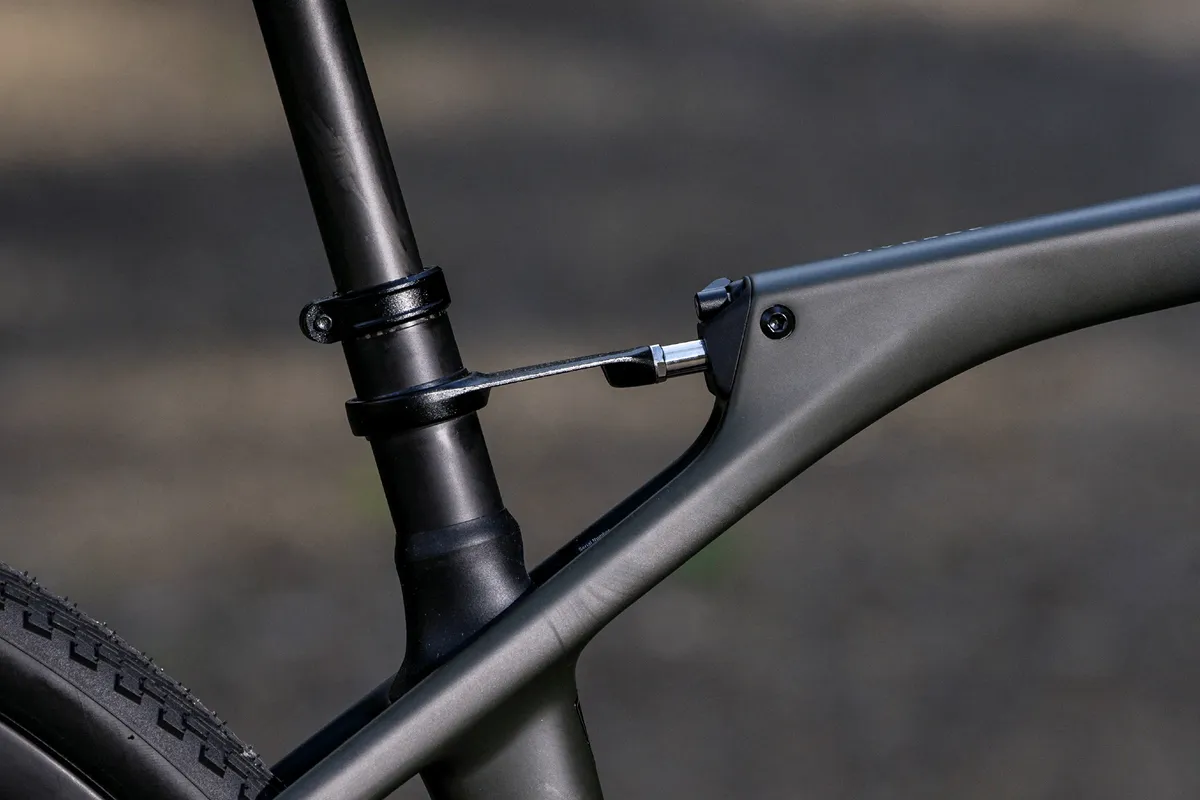
The frame’s tubes will often be shaped to cushion the ride too, particularly in the rear triangle, where curved and flattened sections in the chainstays and seatstays will help with in-saddle comfort. Some seatposts and seat tubes, including on Specialized's bikes with Future Shock Rear, are also designed for extra vibration absorption.
It’s worth considering the type of terrain you’re likely to want to use your gravel bike on and choosing a bike designed to handle that.
If you intend to ride predominantly on roads, with the occasional off-road track to mix things up, you’ll probably want a bike that rides more like an endurance road bike or all-road bike.
Indeed, many of the best endurance road bikes now come with the tyres and clearance (up to 40mm, in some cases) to handle light gravel riding.
If, on the other hand, you expect to ride your gravel bike mainly on technical off-road terrain, there are machines that come with really wide tyres on smaller 650b wheels and a layout that looks more similar to mountain bike geometry.
Gravel bike tyres
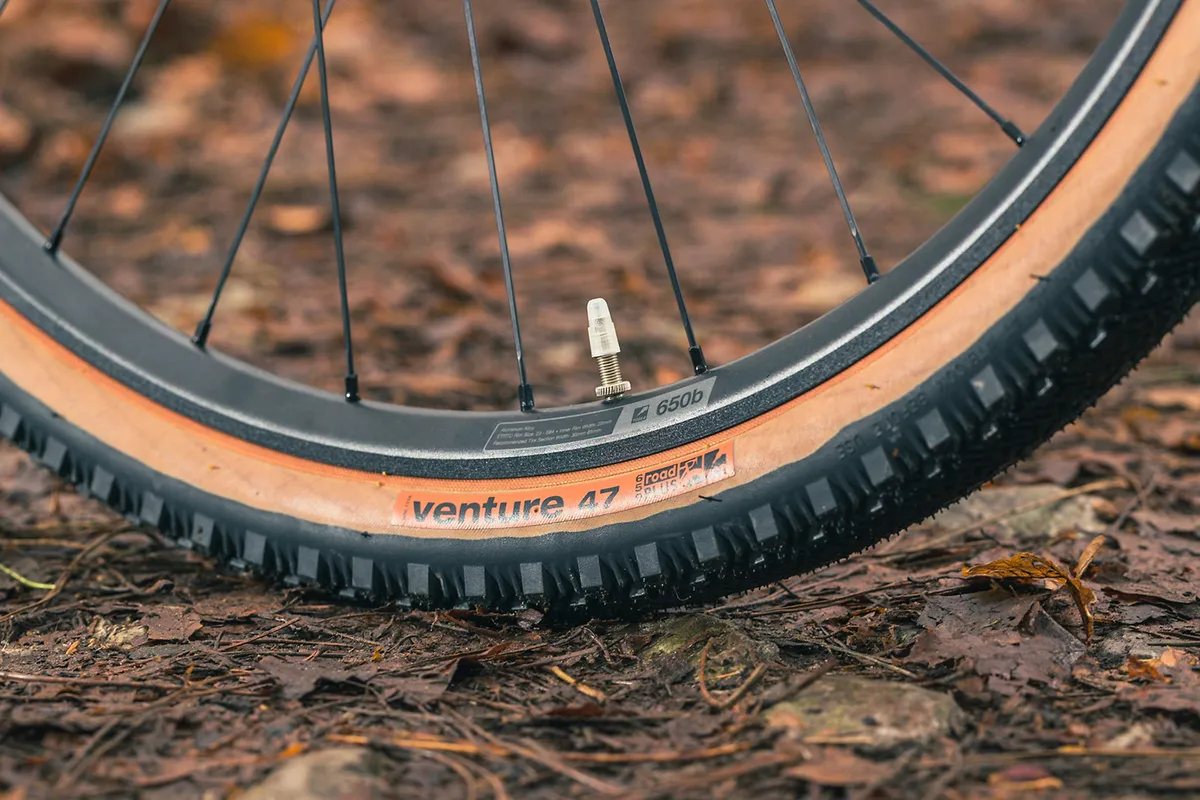
A key feature of gravel bikes is lots of tyre clearance and, in turn, the opportunity to run significantly bigger tyres than a road bike.
We've seen a trend towards more and more tyre clearance on the latest gravel bikes – the Canyon Grizl, for example, offers clearance for 50mm tyres with 700c wheels.
The extra volume of gravel bike tyres enables you to run low tyre pressures of 40psi or less, adding comfort and traction on uneven surfaces.

Tyre choice can make a huge difference to how your bike rides and the conditions/terrain it's best suited to.
How much tread you need depends on your intentions for the bike. Dry trails may only need a light file or diamond tread, while tyres for muddy winter tracks will have more aggressive patterns with side lugs for extra grip and traction.
Choosing the best gravel tyres for your bike ultimately means weighing up rolling resistance, grip and puncture protection.

Gravel bike wheels will usually be designed to run tubeless tyres (without an inner tube). A tubeless setup enables you to keep tyre pressure down with a lower risk of pinch flats – where the inner tube gets trapped between the tyre and the rim in a normal clincher setup.
The tubeless sealant in the tyre will seal small holes caused by thorns, flints and other sharp objects, forming a seal around small cuts in the rubber before too much air escapes. It is still possible to repair a punctured tubeless tyre if the hole is too large for sealant to plug.
A gravel bike’s frame and fork blades will be designed with enough room for large tyres, leaving extra space to handle any mud they inevitably collect, although clearances vary from one bike to the next.
Avoid exceeding the bike manufacturer's maximum recommended tyre size, because the gap between tyre and frame is crucial for preventing mud, grit and other debris from scratching away at your precious paint, and even worse, frame.
Gravel bike wheels
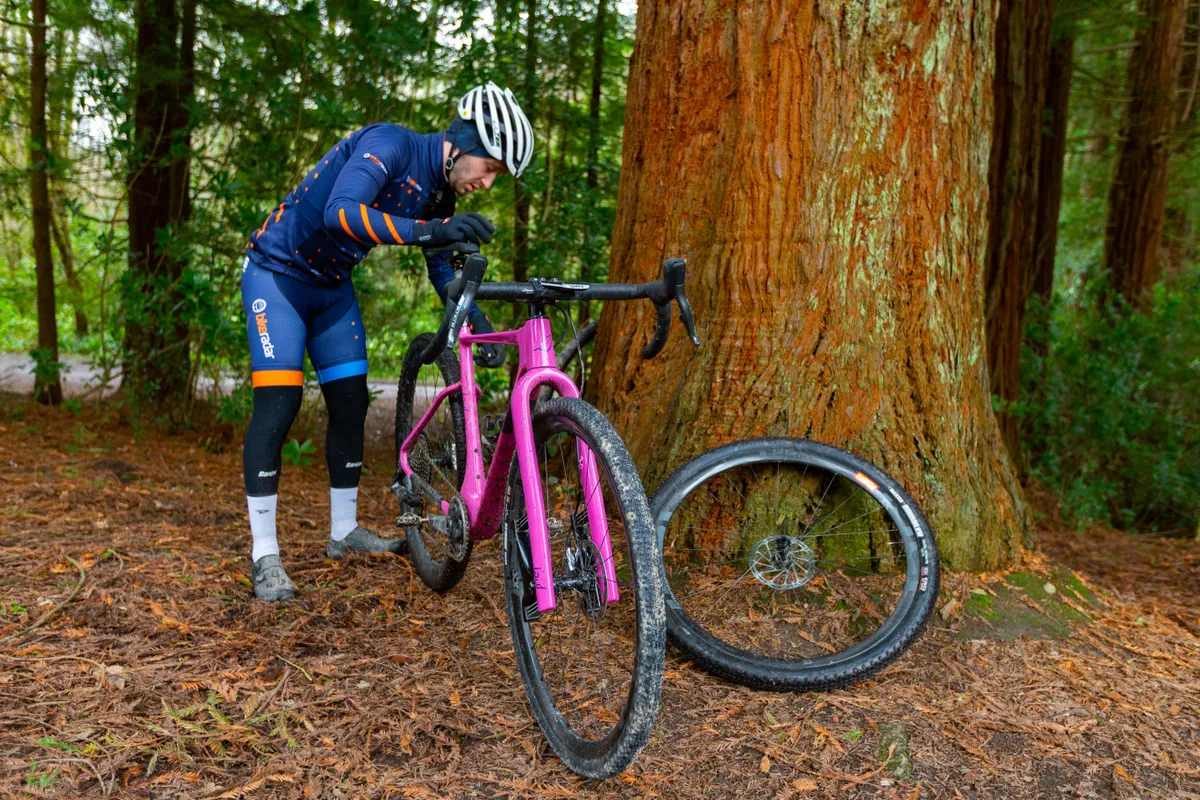
When it comes to gravel bike wheels, 650b and 700c wheels are both popular, although the bigger wheel size (700c) is more common. 650b wheels have a slightly smaller diameter and can be shod with even wider tyres, for additional traction, while keeping the rolling diameter of the wheel plus tyre similar to a road bike, for comparable gearing and ride feel.
However, most gravel bikes come equipped with 700c wheels and tyres as standard. There are also more tyre options for 700c wheels.
Disc brakes
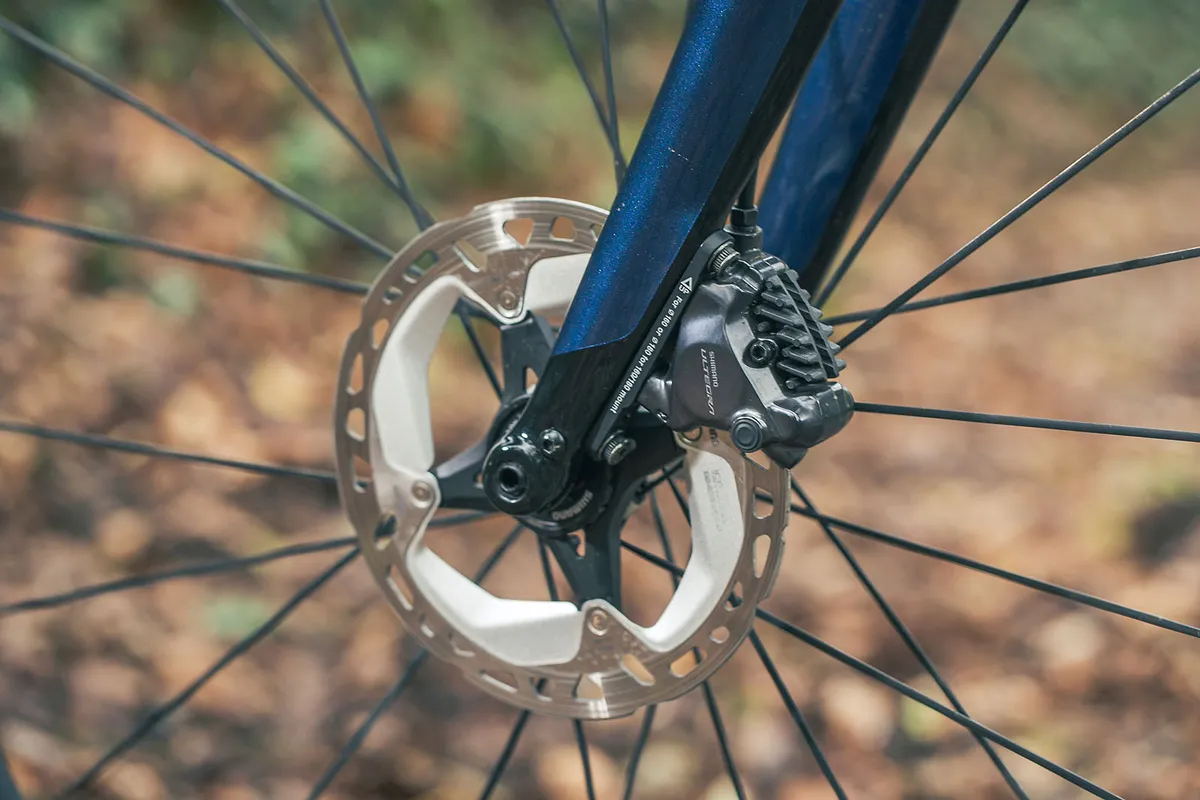
Disc brakes are now almost universal on the best road bikes and ubiquitous on gravel bikes. In fact, the arrival of hydraulic road disc brakes for drop-bar gear shifters helped pave the way for gravel bikes. Many budget gravel bikes will be specced with mechanical disc brakes.
Disc brakes offer consistent, effective stopping, whatever the conditions – crucial for gravel bikes – and leave plenty of room for the wide tyres required for off-road riding.
While some builds opt for smaller 140mm rotors to save weight, go for larger rotors if you're a heavier rider, are heading into the mountains or are loading up with bikepacking kit, for extra stopping power.
Gravel bike gearing
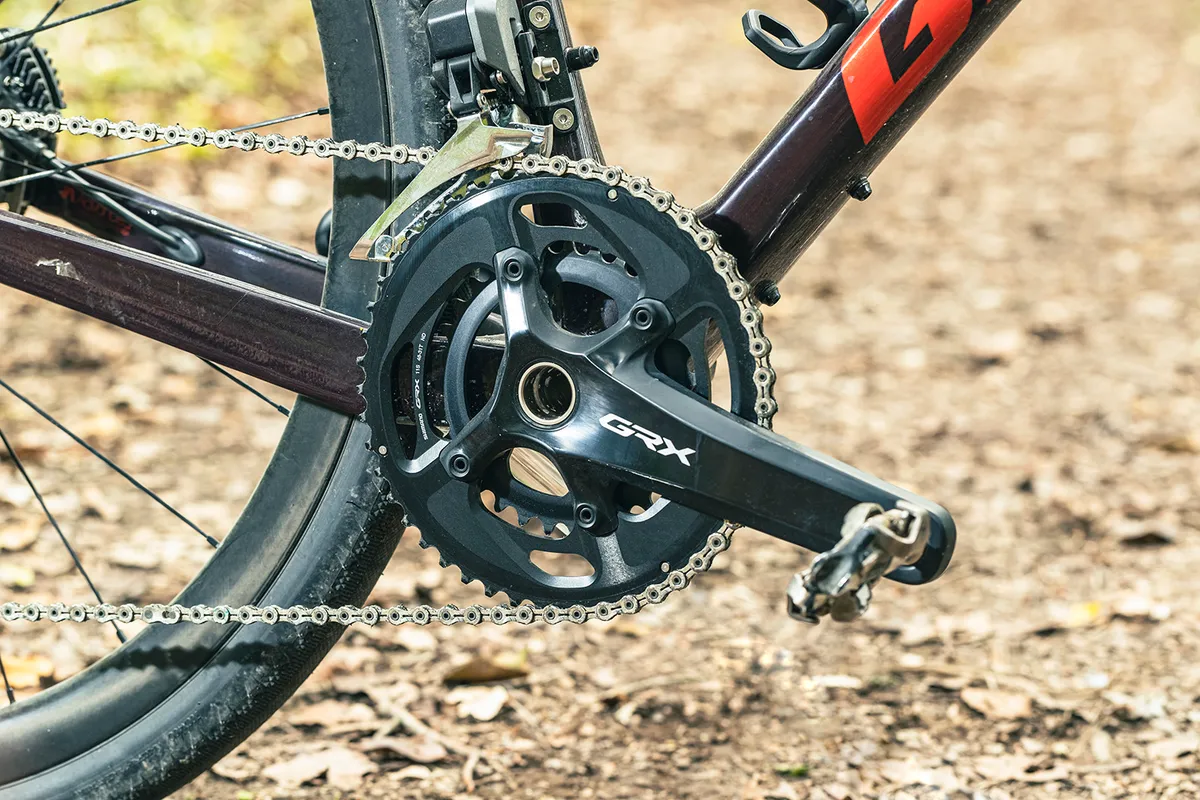
Gearing is key when it comes to gravel bike setup. If you’re heading off-road, you’ll need lower gears to tackle steep climbs and trickier terrain. With grip reduced on loose surfaces, you can’t get out of the saddle so easily when climbing, so you need to spin up the gradient while seated to avoid wheel slip.
Most gravel bikes now have gravel-specific gearing, with Shimano (Shimano GRX), SRAM (SRAM XPLR) and Campagnolo (Campagnolo Ekar) all offering drivetrain options.
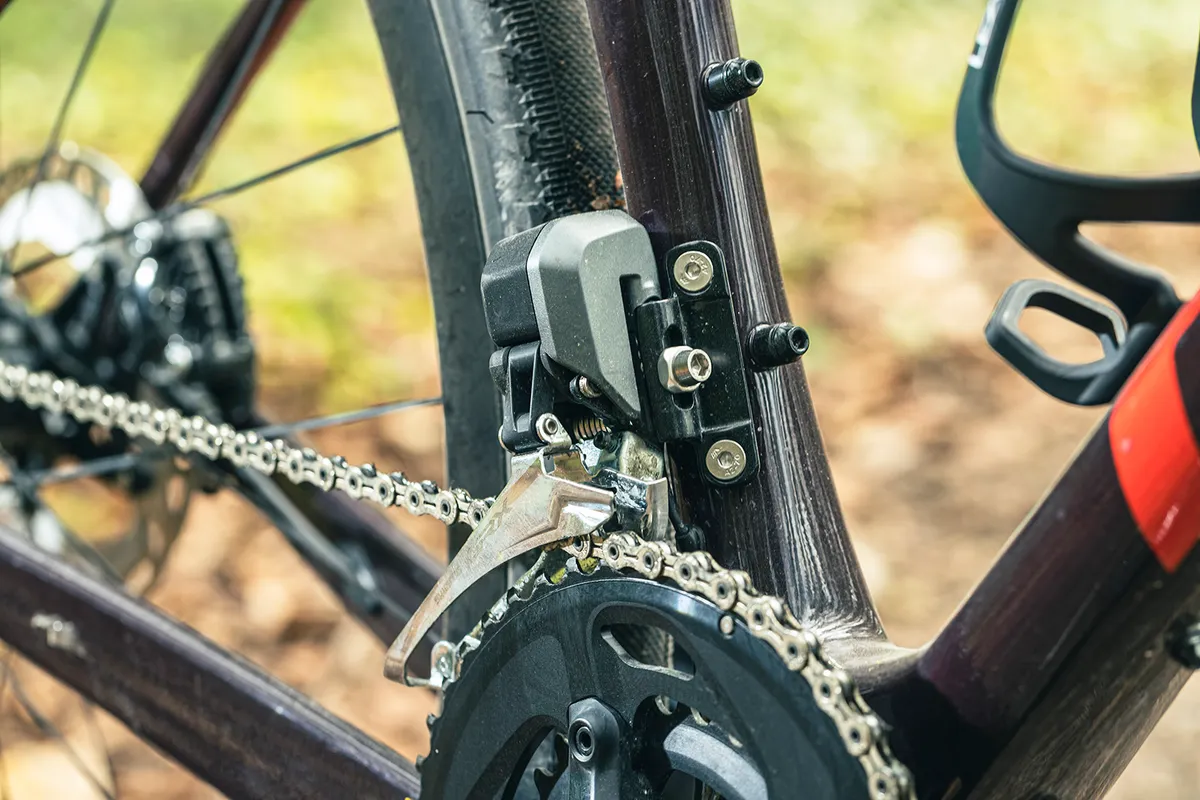
The key decision is between a 1x (with a single chainring at the front) or 2x setup (with two chainrings on a double crankset).
Super-compact cranksets are now common on 2x gravel bikes. Dropping the chainring sizes to 48/31t or 46/30t, in the case of Shimano’s GRX gravel groupset, and pairing this with, at the least, a 11-32t or 11-34t cassette puts tough climbs within reach.
If you plan on riding your gravel bike off-road on steep or technical terrain, suitable gearing is vital and we’d recommend erring on the side of caution – it's better to have a bail-out gear and not use it, than not have a low enough gear for climbing, especially if your bike is weighed down with bikepacking bags.

Single-ring (1x) groupsets are another popular choice for gravel riding.
Removing the front derailleur and using only one chainring makes for a simpler system, with less to go wrong. You get as much range (or more) as a double chainset, just in slightly larger jumps between gears on the cassette (although the latest 12-speed and 13-speed groupsets have made this less of an issue).
The chainring will typically have alternating wide and narrow teeth which, along with a clutched rear derailleur, helps keep the chain in place and running smoothly when it gets bumpy.
Bottle and cargo mounts
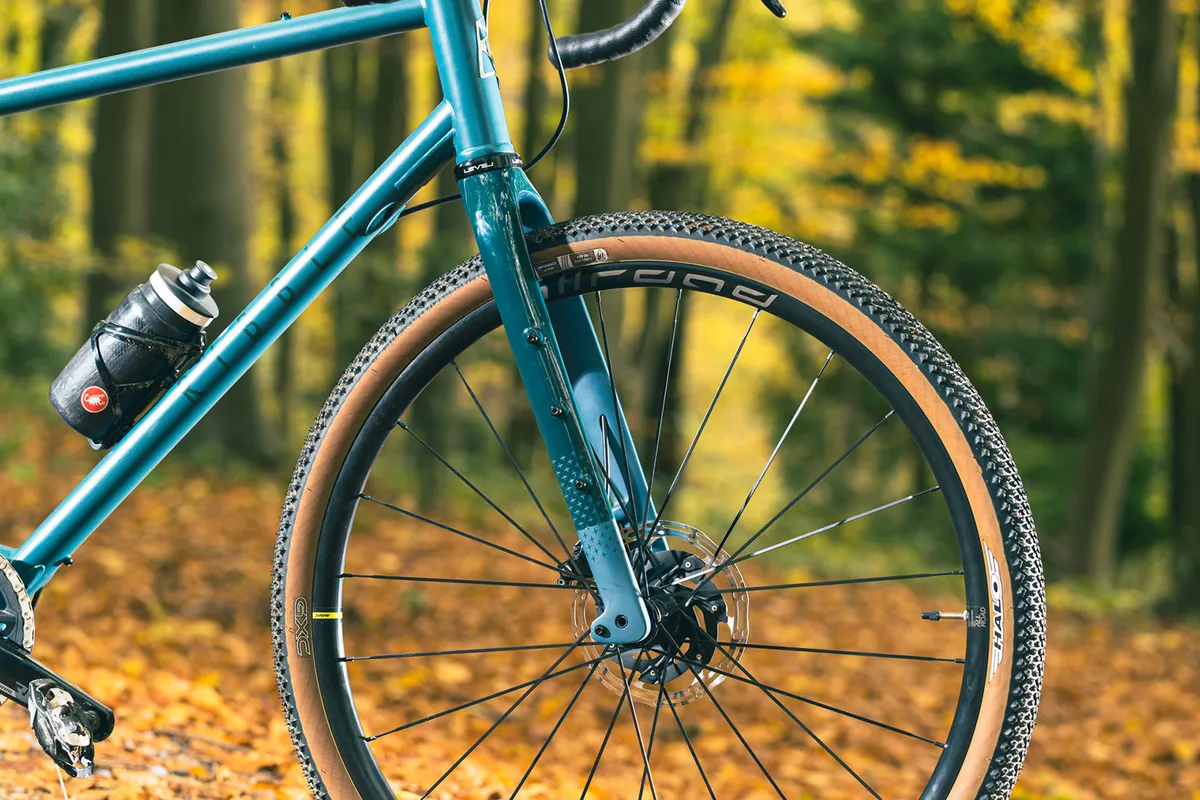
Another typical feature of gravel bikes is lots of mounts for accessories and luggage.
Some gravel bikes, including the Canyon Grizl and Grail, have mounts for mudguards (fenders). Pannier rack mounts are also common, making gravel bikes a great choice for all-weather cycling to work or as a wide-tyred winter road bike.
A typical set of mounting points will also include bolts for a third water bottle under the down tube, for long rides where it may be difficult to top up on water. You can also use these to hold a tool keg in a bottle cage, keeping your pockets free.

Some gravel bikes also feature mounts for a bag on top of the top tube, behind the stem. These can be used to attach a compatible bag, useful for snacks and essential supplies on long rides or during gravel racing, which you would otherwise need to attach using straps.
You might find additional mounts on the fork blades, to bolt-on extra bottle cages or luggage, and some bikes have a mount for a dynamo light on the fork crown.
Flared handlebars

A handlebar that flares out to the drops is a common feature on gravel bikes. The flared drops provide additional stability, improving handling and control off-road, particularly if you’re descending fast.
The bar will usually have quite a shallow drop, so you don’t have to reach down too far.
Dropper posts

A gravel dropper post may feature on some higher-spec gravel bikes – and especially those aimed at the gnarlier end of the gravel-riding spectrum.

Dropper posts are usually controlled by a lever on the bars to lower or raise your saddle, letting you get it out of the way on steep or rough descents, or by a left-hand shifter with a 1x setup.
Gravel bike suspension
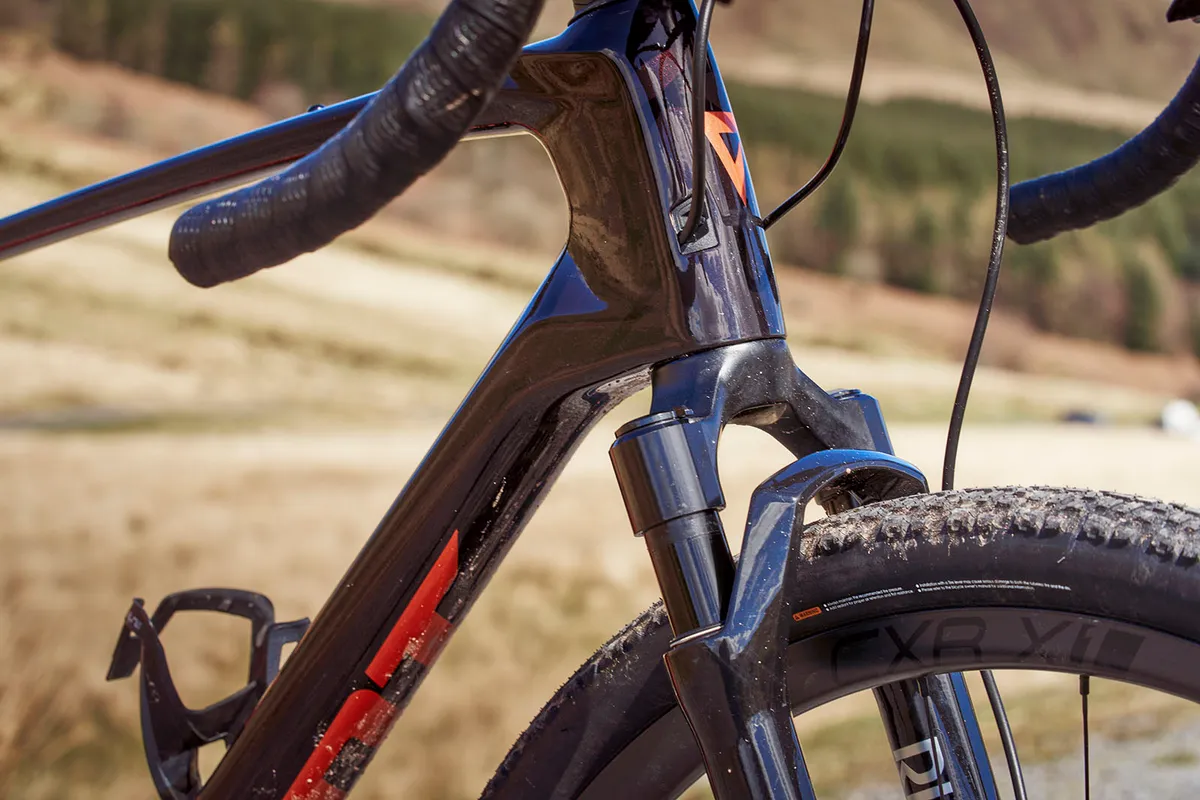
Increasingly you’ll find gravel bike suspension too, whether via a short-travel suspension fork or areas designed to flex, integrated into the frameset and finishing kit, such as flex stems or seatposts.
Importantly, gravel bike suspension is not designed to reduce the impact of big hits like mountain bikes, but rather to reduce the vibration from rougher gravel roads, keeping you more comfortable for longer.
Remember you can try changing your tyre pressures to improve comfort (and grip) on rougher terrain too.
Opting for wider tyres at lower pressures or adding tyre inserts can be a more cost-effective way to upgrade before trying gravel bike upgrades such as suspension forks or components.
Electric gravel bikes

Electric bikes are growing quickly in popularity and that includes electric gravel bikes. A good number of electric gravel bikes are now available from a range of brands.
E-gravel bikes provide electric assistance while you pedal (up to a certain speed, when the motor will cut out) – handy when tackling steep climbs or if you want to venture further off the beaten track.

The amount of assistance you get will depend on the specific electric bike motor used, while range depends on the battery size, the terrain you're riding and the level of assistance required (most systems offer a number of assistance levels).
Gravel bike vs road bike

As we’ve mentioned above, a gravel bike will typically have a less aggressive setup than a road bike. That means you sit more upright and in a more relaxed position, for improved stability and comfort. Plus you’ll have room for wider tyres with extra tread and a wide gear range that includes lower ratios.
But despite this, when weighing up a road bike versus a gravel bike, you’ll probably find the latter isn’t a lot slower on the road than a conventional road bike, particularly if you tailor your tyre choice towards riding on tarmac.
However, if you plan to stick to the tarmac, the speed and efficiency of a road bike will win out in the long-term.
Gravel bike vs cyclocross bike
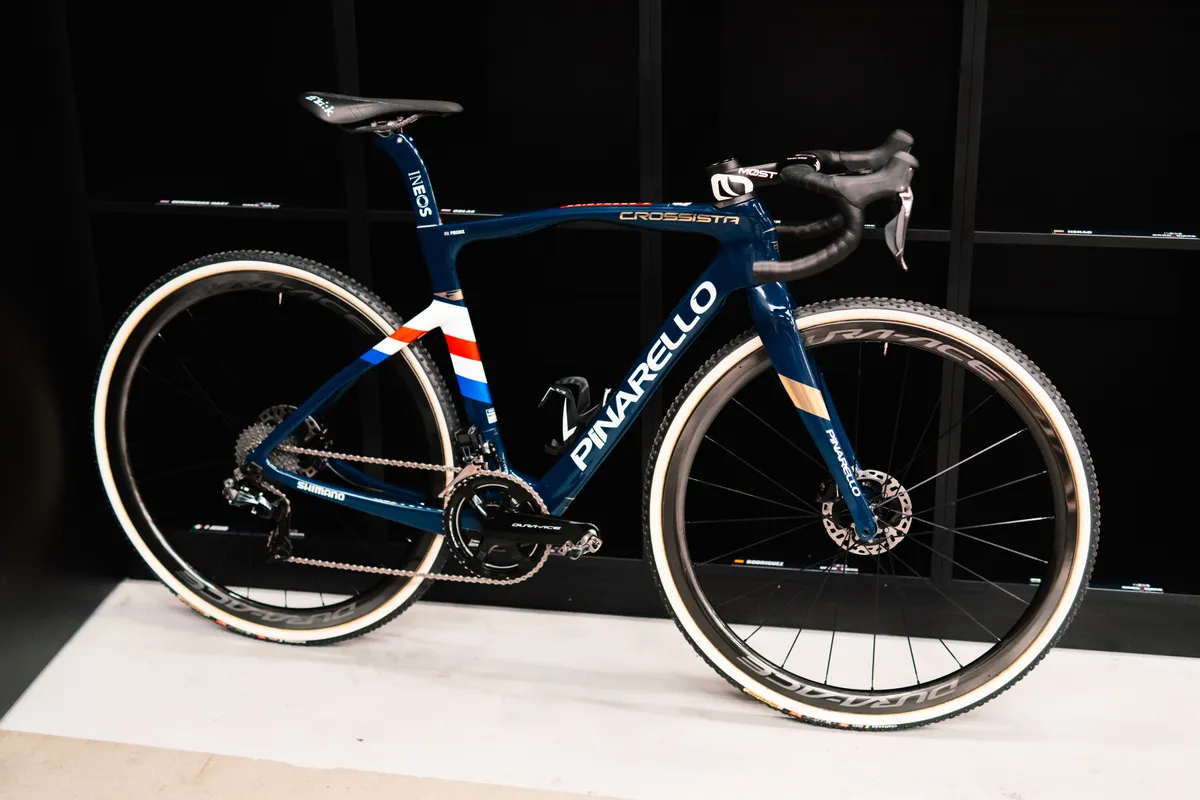
Wide tyres, big clearance, lower gearing – these are all features of the best cyclocross bikes, so what is the difference between a CX bike and a gravel bike?
Well, whereas a gravel bike is designed for endurance riding and exploring, a traditional cyclocross bike will be geared towards racing, usually for an hour or less.
Someone choosing a bike for cyclocross racing will look for more aggressive geometry with faster handling. This helps you accelerate fast and steer around tight obstacles on a racecourse, rather than remaining comfortable on an all-day (or multi-day) gravel riding epic.
A cyclocross bike's tyres will normally be narrower, to comply with race regulations (UCI-sanctioned events only permit tyres up to 33mm wide) and help cut through muddy or sandy ground.
As a result, there won't be as much clearance for tyres as a gravel bike and you probably won’t get as many mounting points for mudguards and other accessories either.
Gravel bike vs mountain bike

Gravel bikes borrow many features from mountain bikes, such as their geometry designed for stability, wide tubeless tyres, wide-range gearing and occasionally, suspension features.
But the drop bars and more aggressive gearing of gravel bikes make them more enjoyable if your rides include any tarmac or faster, less technical off-road terrain.
However, while gravel bike gearing may be significantly easier than road gearing, it’s no match for the range offered by a proper mountain bike groupset.
Mountain bike tyres will also be wider and grippier, and mountain bikes will offer more suspension travel than you’ll find on even the most cushioned gravel bikes.
For light off-road terrain, a gravel bike is just as effective and will be lighter than an equivalent mountain bike, but once you start venturing onto technical trails, mountain bikes are the clear winners.
Gravel bike vs hybrid bike

Like gravel bikes, the best hybrid bikes will usually have wider tyres and lower gear ranges than a road bike. However, a hybrid will have a flat handlebar, rather than drop gravel bike handlebars.
Hybrids tend to be geared more towards road use and cycle commuting, so they’ll usually have less aggressive tread patterns on their tyres.
Without lots of mud to deal with, there may be less clearance in the frame, but you're still likely to find mounting points for mudguards.
Still, that all leads to less off-road ability, so while hybrid bikes are a good option as a commuting bike, or for leisure riding on light trails, if you do venture onto anything remotely technical, or place a greater priority on speed, you’ll have to take things more gently. In this scenario, we'd recommend a gravel bike.
